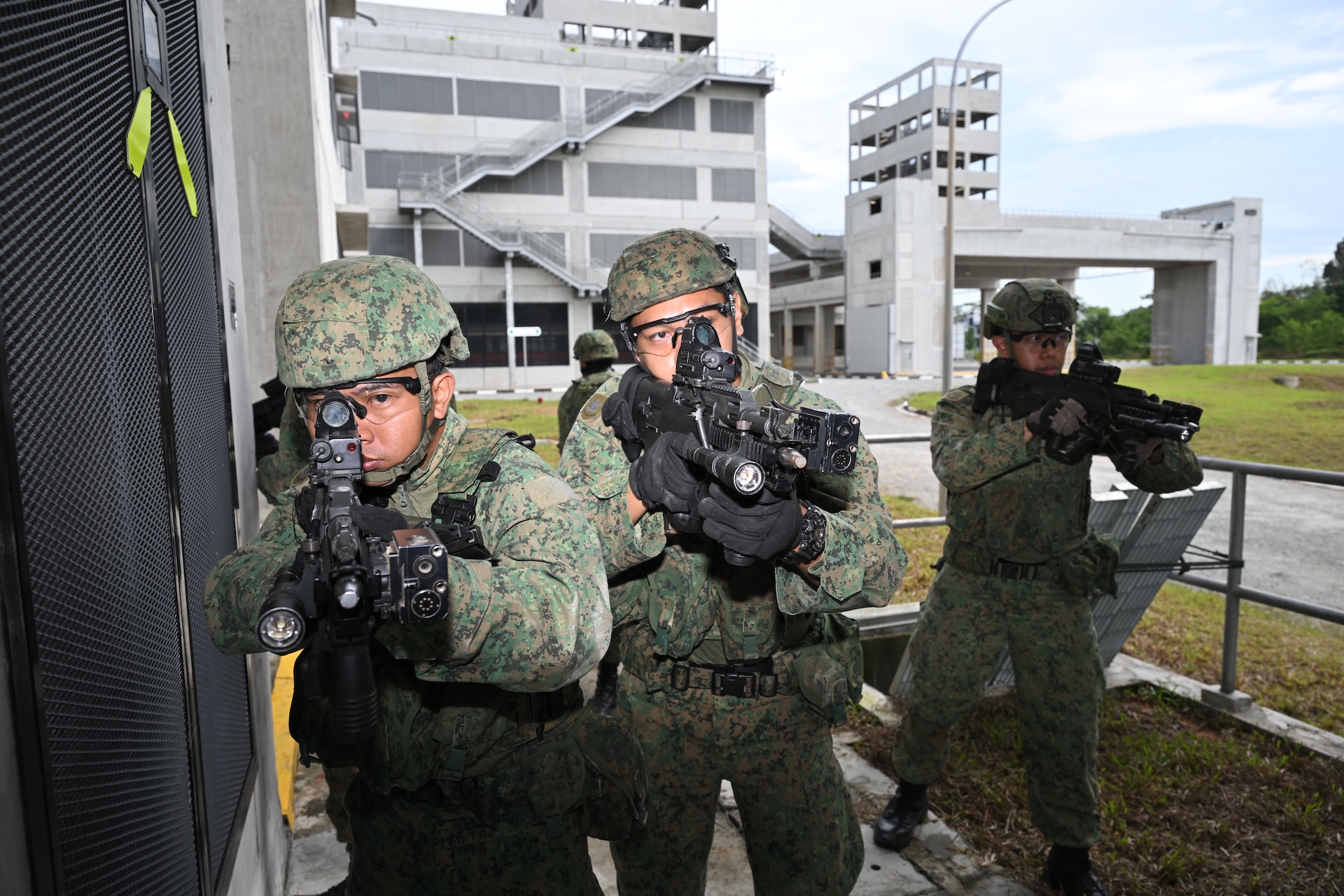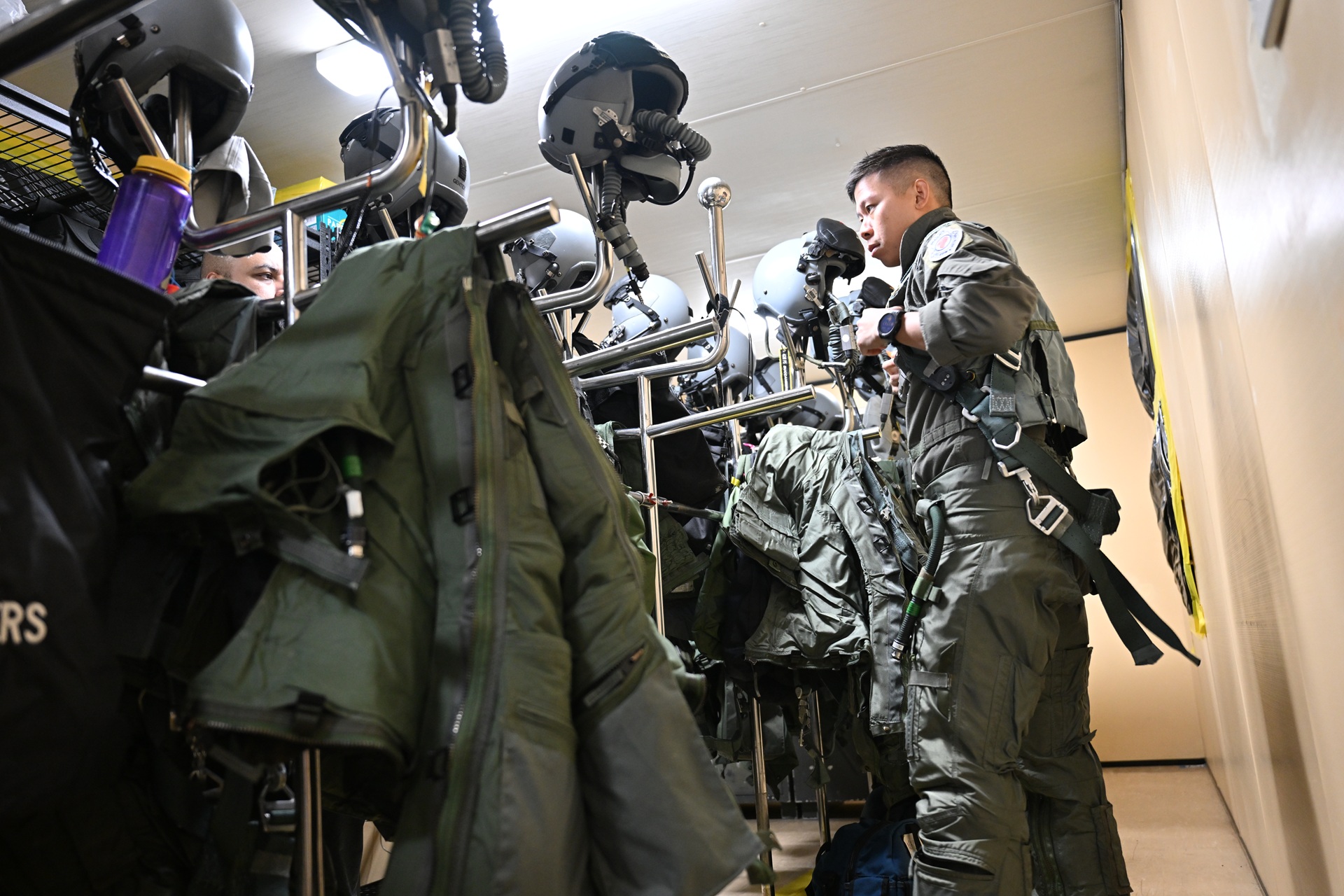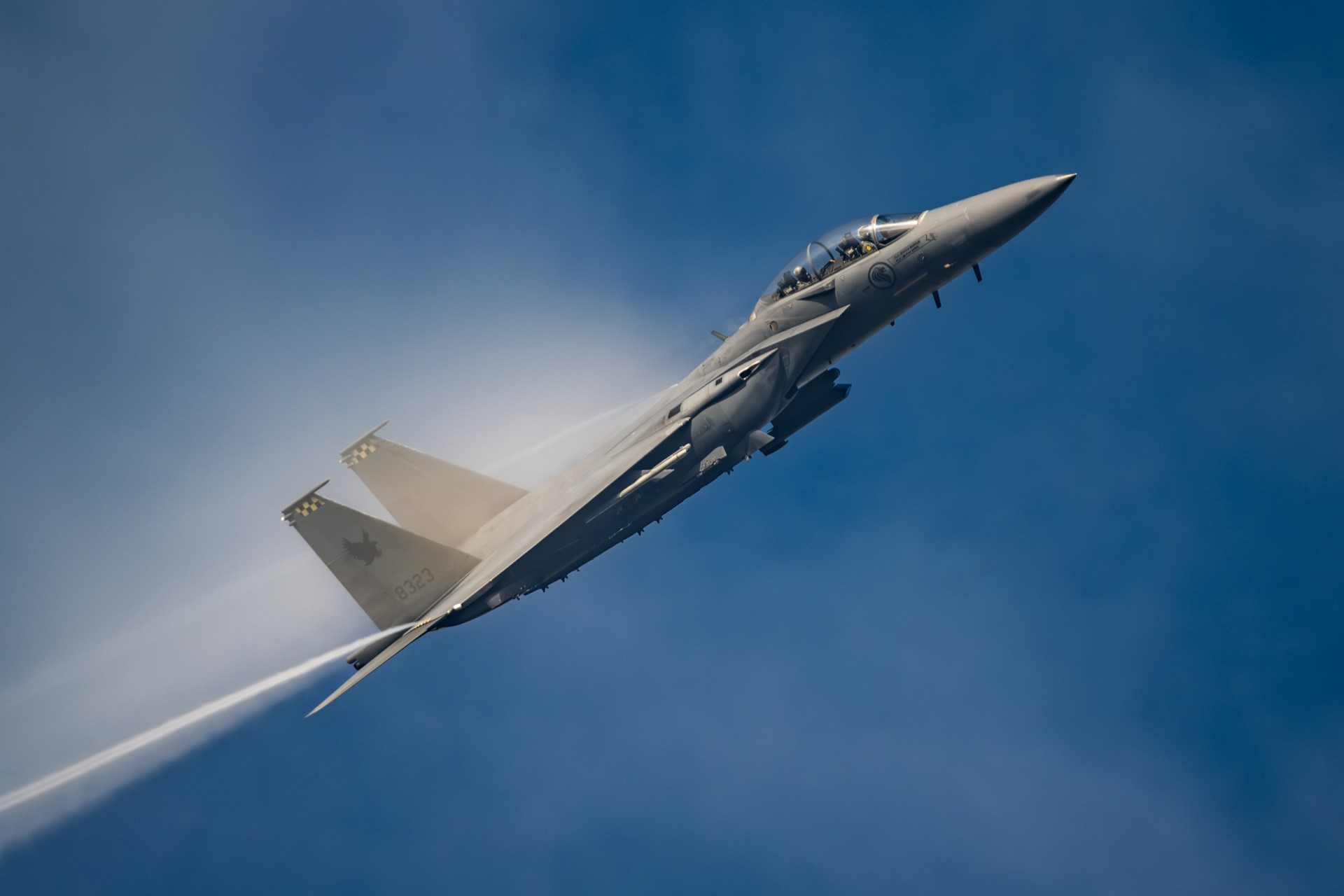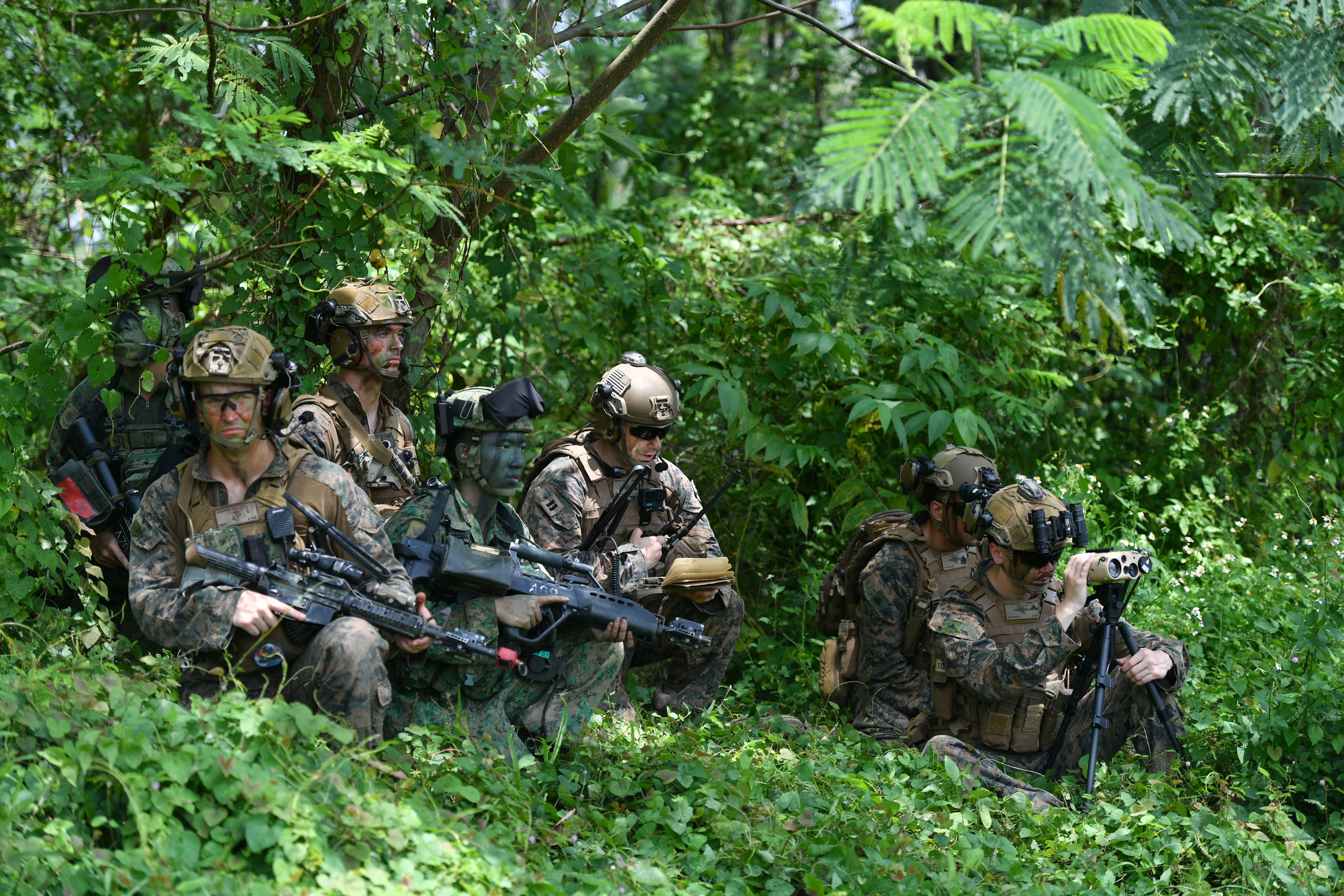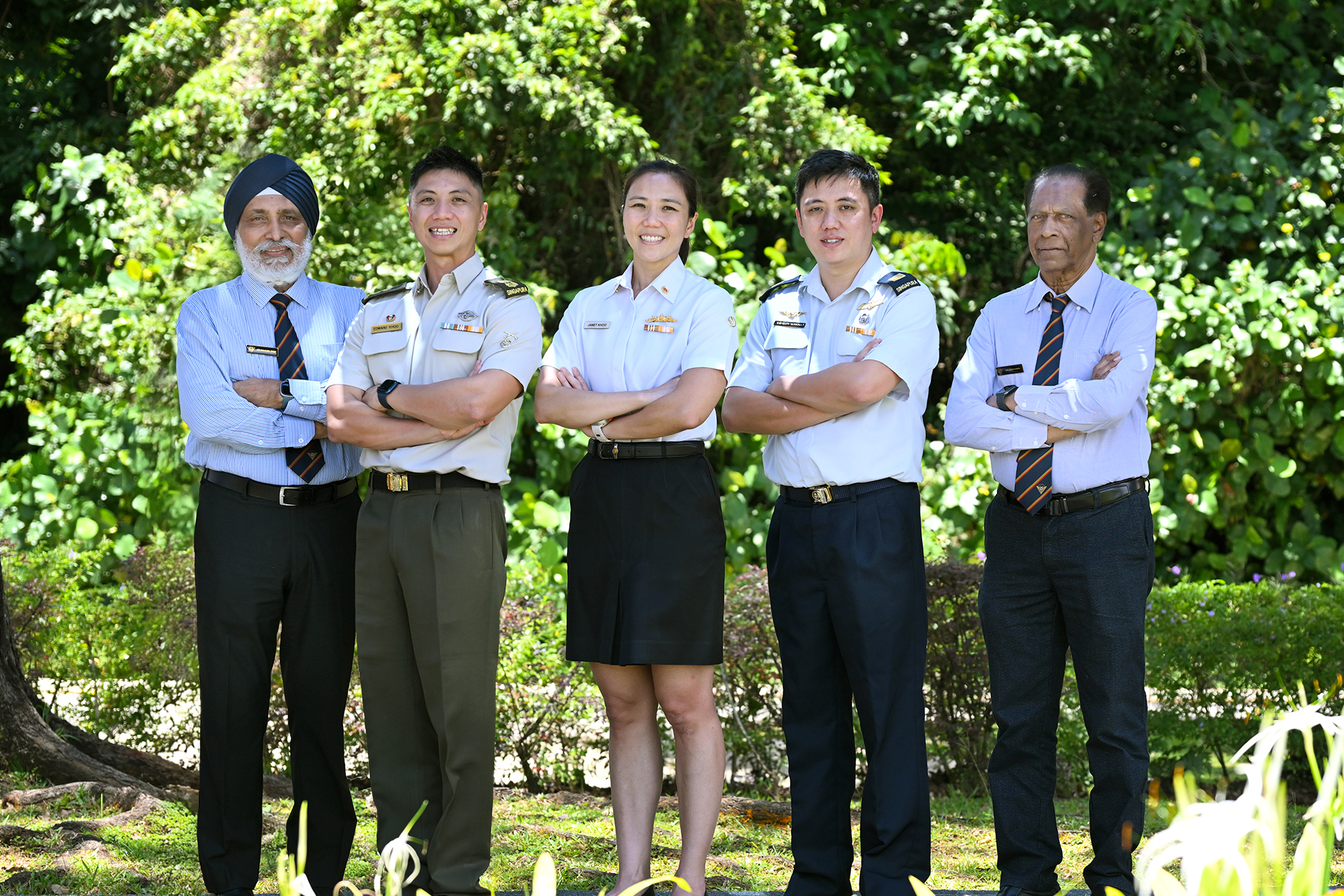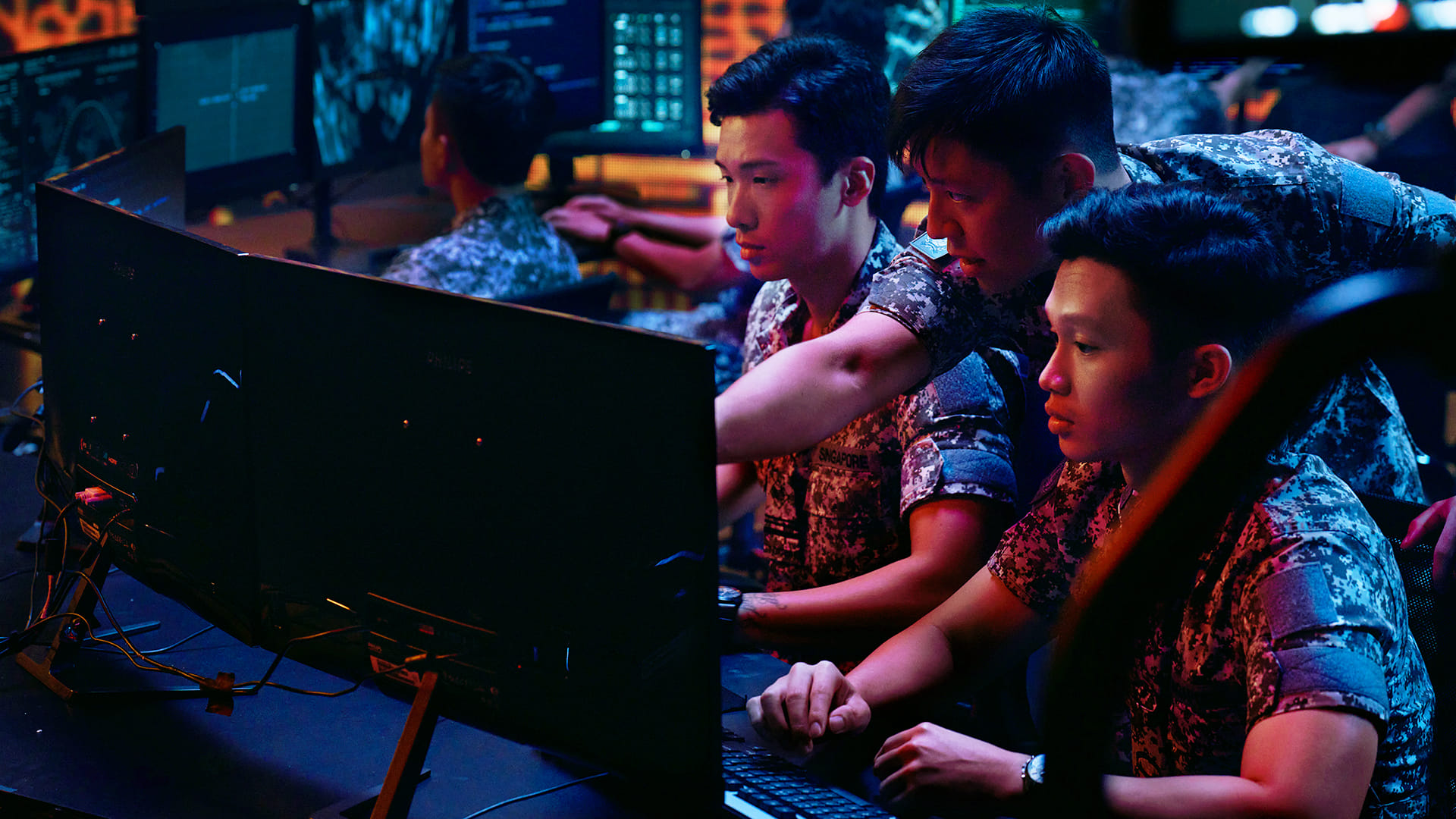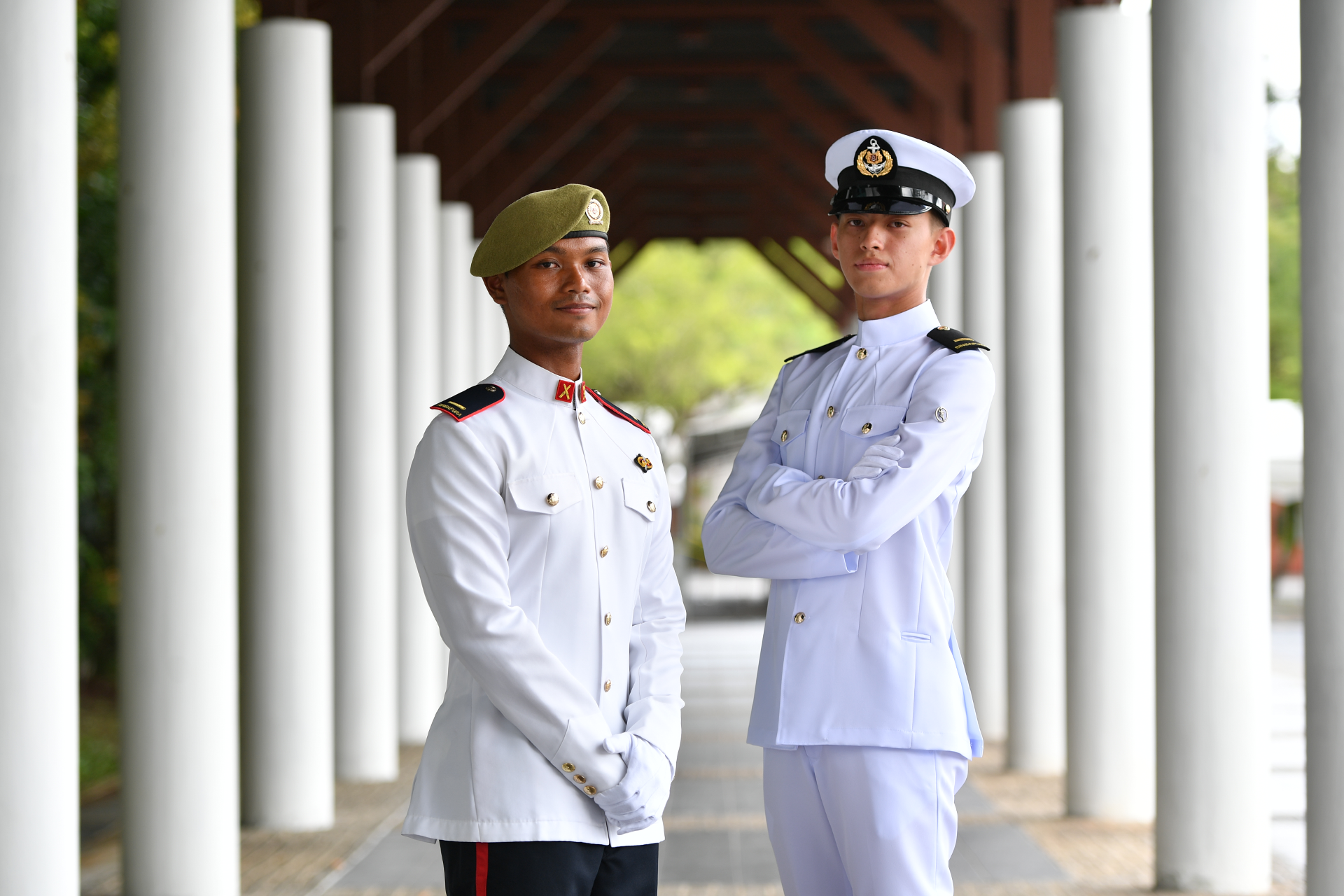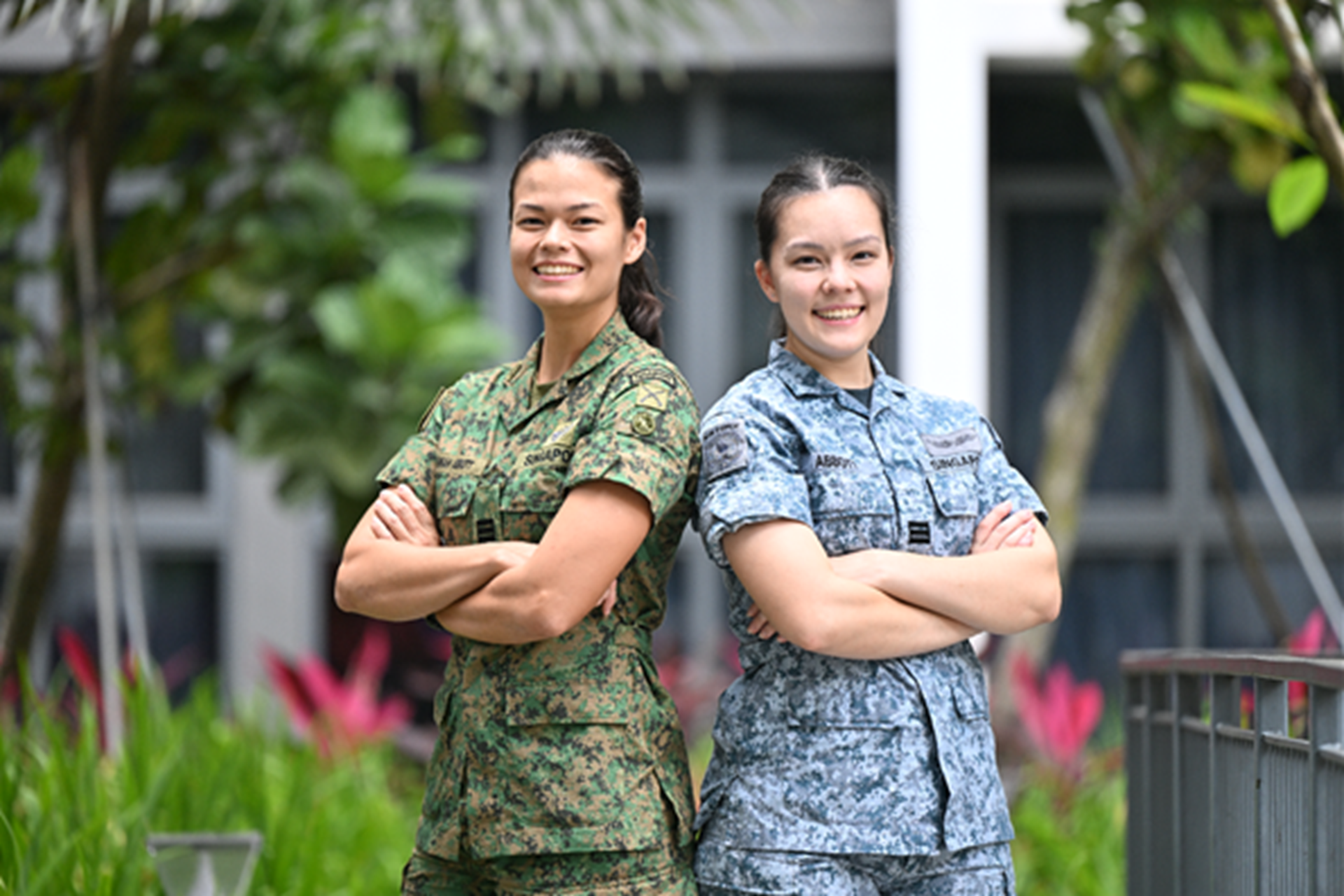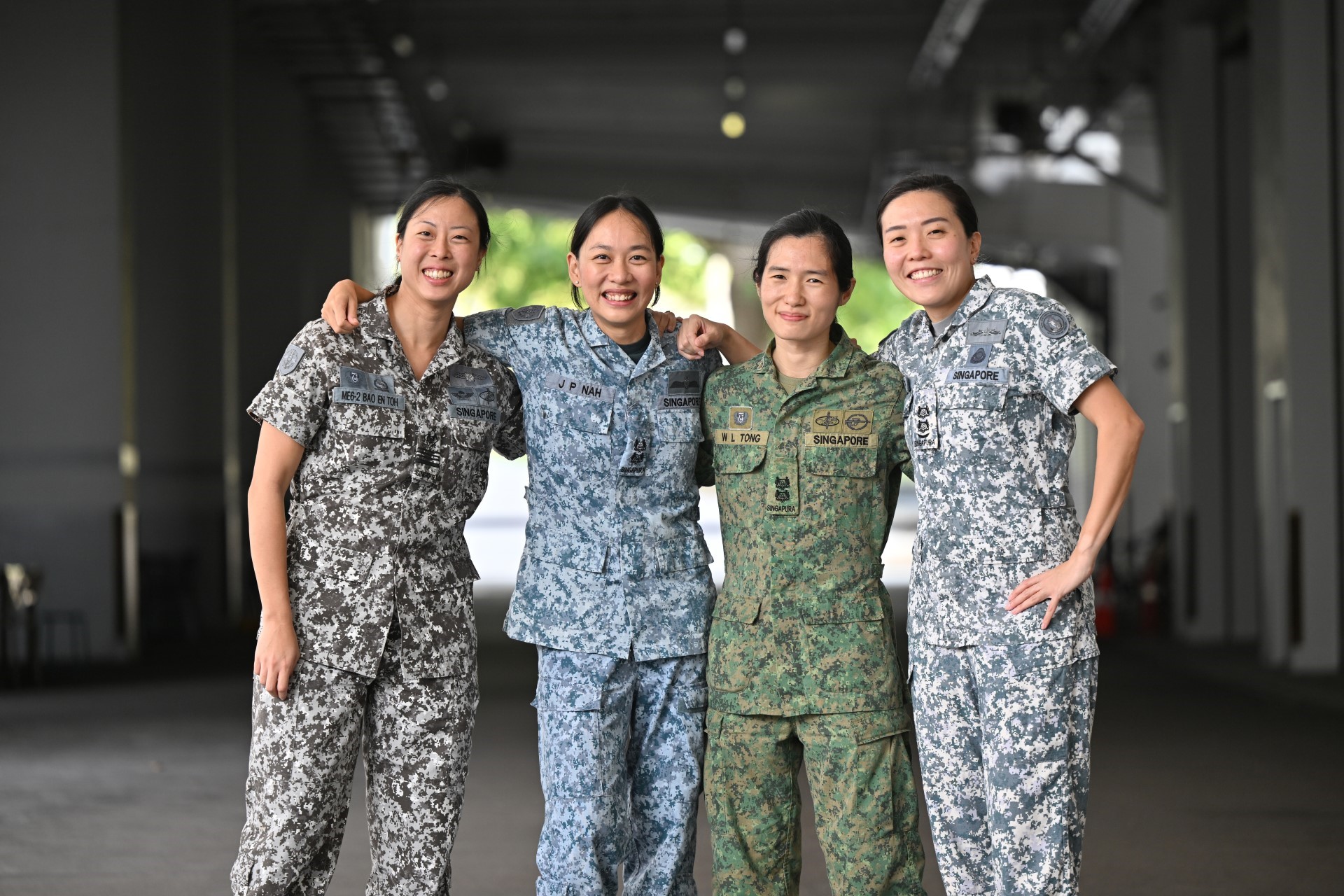HELP FOR QUAKE VICTIMS
STORY // Sheena Tan
PHOTO // Sheena Tan and Bhavani Nyanajegaran
A devastating 7.6-magnitude earthquake roils West Sumatra on 30 Sep, resulting in hundreds dead and tens of thousands displaced. In response to calls for help, Singapore contributes humanitarian aid supplies, while the Singapore Armed Forces (SAF) sends a medical and an engineering team to the quake-hit region.
The massive quake struck at 5pm Singapore time on 30 Sep. In the two days that followed, Singapore Armed Forces (SAF) personnel at the Army Logistics Base worked through the night, mustering the medical gear and supplies required to operate a medical facility for the humanitarian aid and disaster relief mission.
In less than 48 hours, stores of equipment and supplies were loaded onto four C-130 Hercules aircraft, and a 54-man team comprising surgeons, anaesthetists, medics and seven volunteers from Tan Tock Seng Hospital took off from Paya Lebar Air Base on 3 Oct afternoon.
Swinging into action
An hour's flight took them into the provincial capital of Padang, and another hour of travelling - this time by road - took them into the town of Pariaman. And there, the scene transformed from one of cosmopolitan Singapore to collapsed houses, homeless people in tents and severely damaged roads. Being about 40km away from the epicentre, a point deep under the sea north-west of Padang, the coastal town of Pariaman was hard hit by the earthquake.
At the request of the Pariaman Public Hospital, the medical team, led by Lieutenant Colonel (LTC) (Dr) Mohamad Rosman Bin Othman, set up an Accident and Emergency (A&E) clinic at the hospital on the night of its arrival. This was to augment it in managing the increase in the number of casualties.
"Besides the numerous A&E cases, there were many patients who required surgery. But the hospital was lacking in certain facilities and equipment. So we used one of their empty operating theatres to operate on patients," said LTC (Dr) Rosman.
Describing the transformation of the bare operating theatre (OT), Major (MAJ) (Dr) Wilfred Lim said: "Upon arrival, everyone fitted into their roles quickly, and in just 10 hours from the time we arrived at the hospital, we managed to set up the OT from a facility that had no lights or equipment to begin with." MAJ (Dr) Lim is a Medical Officer who specialises in anaesthesia.
Saving lives and limbs
The first day of operations - 4 Oct - for the medical team saw the A&E clinic inundated with numerous earthquake-related casualties. The OT also experienced a high tempo of operations as surgery after surgery was performed on quake victims.
LTC (Dr) Rosman, elaborating on the types of injuries the team encountered, said: "In the operating theatre, we treated several fractures and cleaned many infected wounds. In the A&E clinic, we saw emergency cases such as patients who experienced shortness of breath, chest pains and fractures."
Equipped with patient monitors, anaesthetic machines, oxygen concentrators, ultrasound, digital X-ray machines and orthopaedic implants, the medical team tripled the capacity of the hospital's existing A&E, not just in terms of space or the number of casualties the hospital was able to handle, but also in terms of overall capabilities.
Attributing the ability to treat the heavy load of casualties to two factors, LTC (Dr) Rosman said: "First, our doctors and medics...worked very hard and put in long hours attending to the patients. Second, our cooperation with the local hospital staff was excellent, and that helped us to treat many of the earthquake victims."
Bringing aid to the people
While scores of patients managed to reach the hospital, there were those who could not make their way to proper medical care. Working together with Indonesian Defence Forces (TNI) personnel, the medical team set up a mobile medical clinic on 7 Oct in Koto Bangko, a remote village about 20km north-east of Pariaman.
"Over at Koto Bangko, the polyclinic was badly damaged by the earthquake, and many villagers did not have transport to town hospitals. So instead of having them come to us, we brought direct medical aid to them and performed minor procedures such as wound dressing," explained Captain (Dr) Hope Ang, the Navy Medical Services Medical Officer who manned the mobile clinic.
Appreciative of the team's efforts in meeting the health-care needs of the locals, Koto Bangko village chief Yunismandato Indomarajo said: "Since the earthquake, the Singapore team has helped the hundreds of people here. I'm very thankful for the support and medicine given by the Singapore troops."
After eight days of operating the mobile medical clinic, which was seeing an average of more than 100 patients a day, the number of earthquake-related cases dipped, while more primary health care cases streamed in.
"Our time there was very positive and fruitful because we accomplished what we set out to do, which was to provide medical aid to the earthquake victims," said CPT (Dr) Clive Tan, who also helped to man the mobile medical clinic.
Restoring normalcy
To aid in the return to normalcy for locals of West Sumatra, the SAF also sent a 30-man engineering to work with the TNI to construct two medical clinics, one in Padang and the other in Pariaman. Made of iron and aluminium with insulated panels and measuring 12m in length, 6m in width, and 3.1m in height, these modular buildings will be used as clinics to replace those that were damaged by the earthquake, and are expected to last up to five years.
"The clinics come with fans, lighting as well as power switches, which will enable them to function well as clinics. We hope that the construction of the clinics will help to cater to the medical needs of the local people," said MAJ Benjamin Heok, the leader of the engineering team.
On how the clinic will benefit the people in Padang, Major-General Asriza Tanjung, TNI commander in charge of overall disaster relief efforts in Padang, Indonesia, said: "There are more than 100 patients a day in this area (at the former clinic which was damaged by the earthquake). It will serve the people and help them cope with their suffering and difficulties especially in terms of medical support. It is very useful for us to work together with our friends from the SAF to help the people here."
Dr Bambang Sumatri, a local doctor who worked closely with the SAF medical team at the mobile clinic in Koto Bangko, added: "People in our area are very happy that the SAF engineers are building a Puskesmas (clinic) for us, because our Puskesmas was very badly damaged by the earthquake."
Mission complete
Almost two weeks into the mission, the number of earthquake-related injuries saw a steady decline, and victims of the earthquake and A&E patients who had been treated were well on their road to recovery, with many already discharged from the hospital.
Dr Musrineldi Sp. B, an orthopaedic surgeon at the Pariaman Public Hospital, said: "I'm very happy for the patients and the excellent results of the operations performed by the SAF team. I'm impressed with the set-up of the OT system, the work processes linking the A&E, OT and wards, and I have learnt a lot from their set-up. Most importantly, I'm very grateful for the help given by the SAF medical team."
Ms Sisip Mimi, a 19-year-old who suffered a fracture in her left hand, said on her day of discharge: "I'm now able to move my hand, and I can finally go home and continue on with my life. I'm very grateful and satisfied with the level of care given by the Singapore doctors, which helped me to recover in just two days."
For the medical team, there was an immense sense of fulfilment from having done their part. "I found great meaning in this trip because as a doctor, I want to help people to the best of my ability, so this was truly a mission that enabled me to live up to my aspirations," said MAJ (Dr) Pang Hee Nee, an orthopaedic surgeon.
Summing it up best was MAJ (Dr) Lim, who said: "Seeing patients smile and say 'terima kasih' after their operations was quite memorable... We didn't just come here to treat casualties, but also to bring hope to those who have lost their homes, and to tell them that as neighbours, we're here for them."
On 16 Oct, both the medical and engineering teams concluded their operations in West Sumatra. The medical clinics were handed over to the relevant authorities and the two teams returned to Singapore on 18 Oct.
They call him 'Sunkist'
Three times a day, patients in wards 2 and 4 at the Pariaman Public Hospital got their prescribed dose of laughter when medic 3rd Sergeant (3SG) Liew Shanzhi made his rounds to visit them and give them their medication.
Affectionately known as "Sunkist" by the patients he visited, who found it difficult to pronounce his Chinese name, 3SG Liew always made it a point to make a grand entrance into the wards by greeting the patients with a loud "Good morning!".
Explaining why he did so, he said: "The patients and their families were really very down because of the earthquake, so I needed to cheer them up. Rather than adding to the solemn atmosphere, I'd smile and wave at them, and even crack jokes to make them laugh."
While he remembers all the patients he visited, the one closest to him was a 70-year-old man whose left leg was fractured by falling debris.
"I addressed him as Pak Kachang, and I always talked to him because he's very lonely and I didn't see anyone visiting him. So I felt like a son to him, and took care of him to the best of my abilities. Every time he saw me, he would sit up and give me a big smile, and in the end, he had a speedy recovery."
It was a teary affair when 3SG Liew bade farewell to his patients and their families, who expressed their gratitude for his care and concern.
"Although they are homeless and do not have much money to even buy food for themselves, they offered to share their food with me. I was really touched by that." - 3SG Liew.

